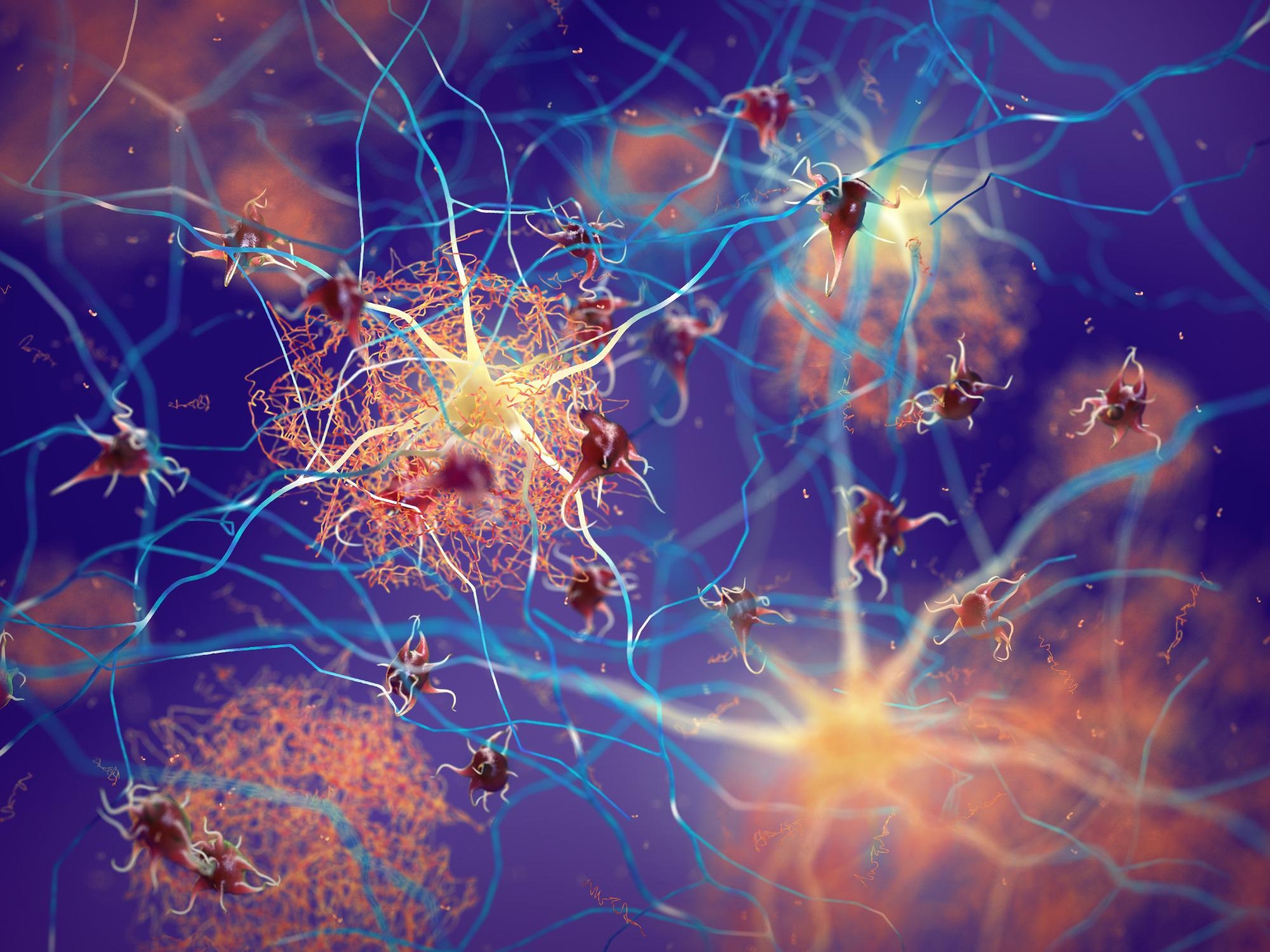
Image Credit: Shutterstock.com / nobeastsofierce
A new nanotech breakthrough could help spot Alzheimer’s disease and other neurodegenerative disorders early and assist in their treatment.
Alzheimer’s disease (AD) is a neurodegenerative disease that is the cause of 60–70% of cases of dementia. The disease starts slowly — with the most common early symptom being difficulty remembering recent events — and worsens progressively. This means that early detection is crucial for treating AD and mitigating its effects.
Unfortunately, current techniques to diagnose AD — such as imaging techniques brain scans — can only be employed after a patient has begun to display early symptoms like memory loss and behavioral changes.
This could be about to change, however, thanks to researchers from the University of Manchester. The team has discovered the existence of previously unknown biomarkers in the blood, which could be used to test for AD.
The scientists built on this finding by developing a cutting-edge detection method for these biomarkers that relies on nanotechnology to spot signs of neurodegeneration in a subject’s blood.
This could mean detecting AD and other neurodegenerative disorders many years before its first symptoms even become noticeable, allowing patients to receive early and effective treatment before significant damage to the brain occurs. This also allows doctors and medical professionals to more effectively track the onset and development of AD, enabling them to understand this devastating disorder better.
The technology has been patented by Manchester’s Nanomedicine Lab and is described in a new paper published in the journal ACS Nano.
Diagnosing Alzheimer’s Disease Early
One reason that early detection of AD is so tough to develop is that even though we know early tracers of the degenerative disease are likely to be present in a patient’s bloodstream, they exist in such small amounts that detecting them is akin to searching for a needle in a haystack. Thankfully, it seems that the researchers’ nanotech breakthrough can magnify and spot even these slight signals.
Hidden information in the blood is likely to echo the complex cascade of events occurring in the brain of Alzheimer’s disease patients. We wanted to engineer a nanotechnology blood-mining platform in order to uncover this information and identify early signs of Alzheimer’s disease at the pre-disease state.
Dr. Marilena Hadjidemetriou, Lead Researcher of the study, The University of Manchester
The ‘pre-disease sate’ referred to by Hadjidemetriou is prior to the formation of amyloid plaque in the brain. Amyloid plaques are blobs of malformed proteins that form between nerve cells. They are toxic to nerve cells, but researchers aren’t yet clear why this is the case.
Regardless of the mechanism by which the damage occurs, the presence of amyloid plaque in the brain results in neuronal damage. And perhaps more worryingly, once formation begins, these clusters of toxic misshaped proteins can’t be removed.
That’s why hindering their development is key to slowing the growth of AD. But, current diagnosis methods mean treatment can’t be administered before amyloid plaques are already present in the brain.
How the Nanodetection Method Works
The researchers turned to nanotechnology to help develop their early AD diagnosis method by enhancing the sensitivity of current mass spectrometry techniques.
This hinged on the use of liposomes — spherical-shaped molecules with layers that resemble the surface of cell membranes — to lure out and snare proteins in the blood that indicate the presence of amyloid plaques and neurodegenerative disorders.
Early tests in rodent subjects with AD showed the nanoparticles could attract hundreds of proteins associated with neurodegeneration. These proteins were trapped on the particles’ surfaces intact, allowing the scientists to extract and analyze them.
This study was rather like a fishing expedition: we didn’t know what was beneath the surface of the ocean. The nano-tool we developed allowed us to see deeper into the blood proteome, identifying proteins of interest that are directly associated with neurodegeneration processes in the brain, among thousands of other blood-circulating molecules.
Kostas Kostarelos, Study co-author and Professor of Nanomedicine, The University of Manchester
Tracking the fluctuating levels of proteins in the blood during different stages of AD — from the pre-diseased state all the way through to the symptomatic disease — means that the team has been able to map out some important patterns in disease monitoring.
Ultimately, this could result in new blood test possibilities to predict the onset of AD and a wide range of neurodegenerative disorders.
“We hope that these early warning signs of Alzheimer’s disease could one day be developed into a blood test and we are actively seeking validation of these signatures in human blood,” concludes Kostarelos.
References
¹ Hadjidemetriou. M., Rivers-Auty. J., Papafilippou. L., et al, [2021], ‘Nanoparticle-enabled enrichment of longitudinal blood proteomic fingerprints in Alzheimer’s disease,’ ACS Nano, [https://nanomedicinelab.com/]
Disclaimer: The views expressed here are those of the author expressed in their private capacity and do not necessarily represent the views of AZoM.com Limited T/A AZoNetwork the owner and operator of this website. This disclaimer forms part of the Terms and conditions of use of this website.